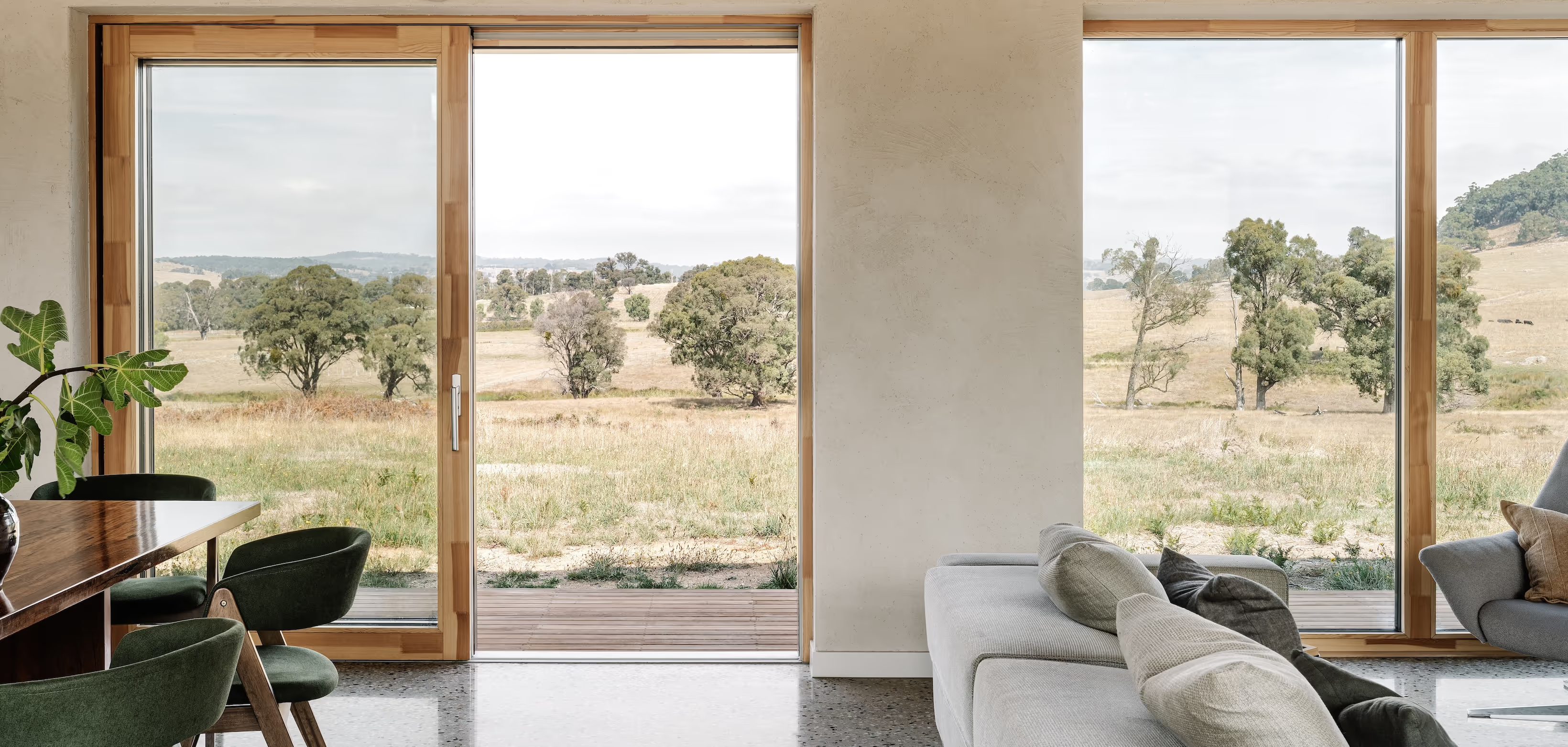“A passionate love of life and all that is alive...”
Biophilia as described by Erich Fromm, who coined the term in 1973.

Designing with nature in mind
Envirotecture’s directors have been creating biophilic designs since before there was a name for this approach to architecture. At its most basic, biophilic design creates physical and visual connections to the outdoors via windows and doors. This doesn’t require walls of glass and gigantic lift slide doors! It can be achieved on any scale and with any budget by carefully framing views, bringing daylight inside in helpful and appealing ways and creating opportunities to open up the building to breezes, scents and sounds when desirable.
Biophilic design is getting more attention thanks to research showing the remarkable health and physical and mental wellbeing benefits such buildings create. Hospital patients have better health outcomes and need less pain relief and employees report improved mood, productivity and creativity in buildings with biophilic elements.
Our practice regards biophilia as more art than science. We think it couples beautifully with the Passivhaus methodology, which in unimaginative hands can be inclined toward sterile rectangular boxes.
We draw on insights from the Living Building Challenge, an international sustainable building certification programme that aims to create a regenerative built environment.

“Our award-winning Huff’n’Puff Haus is nestled in a challenging landscape. An outdoor room was a nice idea but understanding the site suggested it would have limited use. For much of the year, it would be too wet, too hot, too windy, have too many flies or mosquitos or pollen and dust for anyone to want to use this space.
Instead, I created an interior that connects people to the outdoors on a daily basis. Here, on this grand scale, the owners gaze toward the horizon across vast open landscapes and can see the distant weather rolling in. They see out and can also readily step out into it.
You can have this too on a tiny site in a densely built suburb, where the outdoors you connect to is perhaps a courtyard garden or the canopy of a grand street tree that transforms with every season.”





